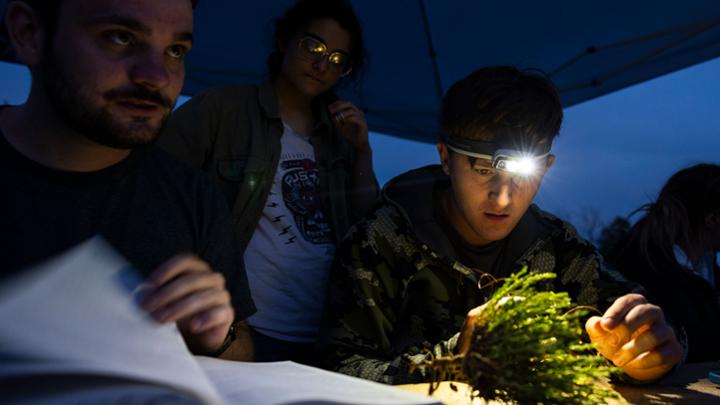Old journals and an agreement with a national park offered researchers at Texas Tech a chance at a project spanning five decades.
Old journals and an agreement with a national park offered researchers at Texas Tech a chance at a project spanning five decades.
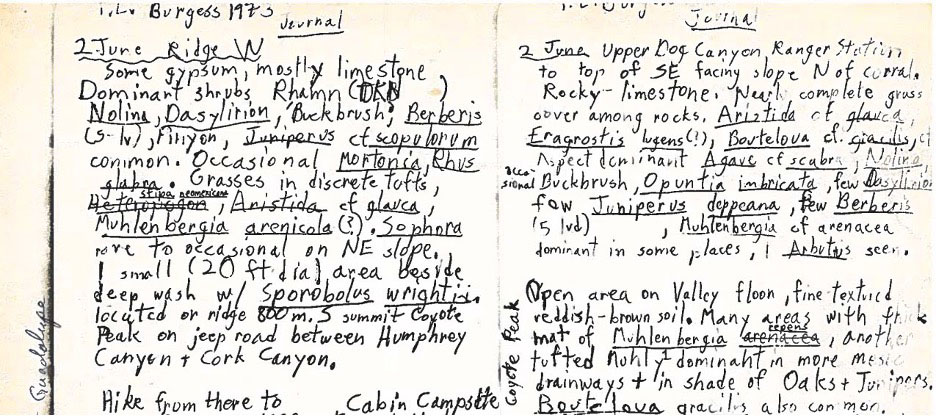
All good stories start somewhere.
This one begins in the early 1970s on a tract of land just northwest of Pine Springs,
Texas.
This isn’t the flatland of the southern high planes, the type of landscape normally
associated with Texas Tech University. It’s rugged, marked by canyons digging deep
into the ground and peaks rising over the surrounding area.
In the late ‘60s, this piece of land was primarily a goat ranch with remnants of oil
work still spotting the landscape. Even then it was dry, part of a semi-arid region
devoid of the water needed for the thick forests commonly found on the other side
of the state.
But by the time Tony Burgess, also known as T.L., was writing this journal entry,
the piece of land had been donated and designated as Guadalupe Mountains National
Park.
In 1974, Burgess was a graduate student three years into studying the flora of the
area alongside Texas Tech professor David Northington.
His journal, at times, reads like the musings of a kid out on a fun camping trip.
The last part of the March 7 entry reads, “Rap with guy & chick from New Jersey +
2 backpackers from Dallas.”
An entry from March 12 says “Up & breakfast with Roger. Look over his grass collection.
Make Final Delivery of Cowden’s collection & good lunch! Mrs. Cowden growing tomatoes
under light in old boxcar.”
But along with descriptions of the people he met, good lunches and campsite, Burgess
left a treasure map for future researchers.
Between 1971 and 1977, Burgess and Northington collected thousands of samples from
Guadalupe Mountains National Park. They were among the earliest collectors in the
park when it was founded.
The plant samples were brought back to Lubbock, to Texas Tech’s E.L. Reed Herbarium.
Northington was the director of the herbarium at the time and the two botanists took
great care in preserving the samples.
Burgess returned to the park every summer until his graduation in 1977, writing detailed
descriptions of the samples he identified and collected along the trails. He also
used landmarks and dead reckoning to describe the locations he collected from.
For nearly five decades, the samples sat in the herbarium, which itself moved from
place to place over the years: first in the science building and then into the Museum of Texas Tech University in the 1980s. In 1990, the herbarium moved to the top floor of the Biology building
and was largely forgotten.
It was a treasure trove of plant samples. Among them were at least four rare species
from the Guadalupe Mountains, and literally thousands of specimens collected in the
‘70s.
The only thing was, nobody really knew what was there.
That all changed in 2017 when Matt Johnson arrived at Texas Tech as an assistant professor
and the new director of the E.L. Reed Herbarium.
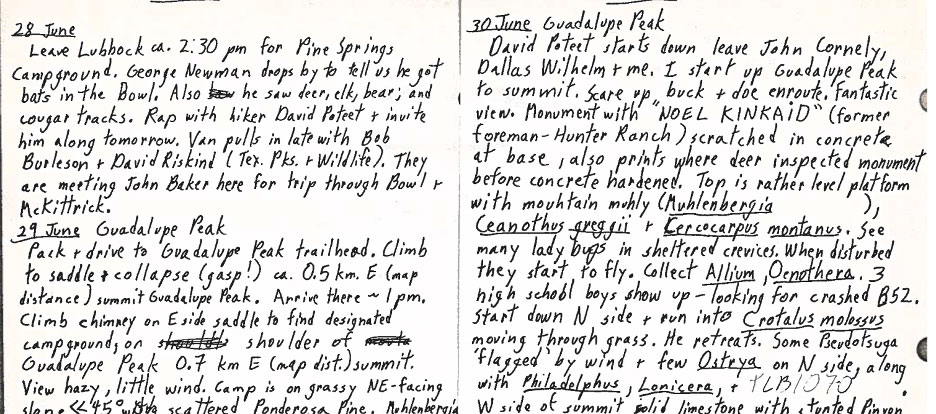
To say the herbarium needed a bit of work when Johnson took over in 2017 would be
kind.
“When I got here, this had been sort of a forgotten facility for a couple of years,”
he explained in 2020. “It was, ‘Put stuff in here, no one’s really doing any plant
taxonomy research, no one’s going to care.’ It was super cluttered and not a good
research facility.”
He and several research assistants spent the summer cleaning it out – a project they
jokingly referred to as “Fixer Upper: Herbarium Edition.”
As part of the process, Johnson and his students found the treasure trove of samples from Guadalupe Mountains National Park.
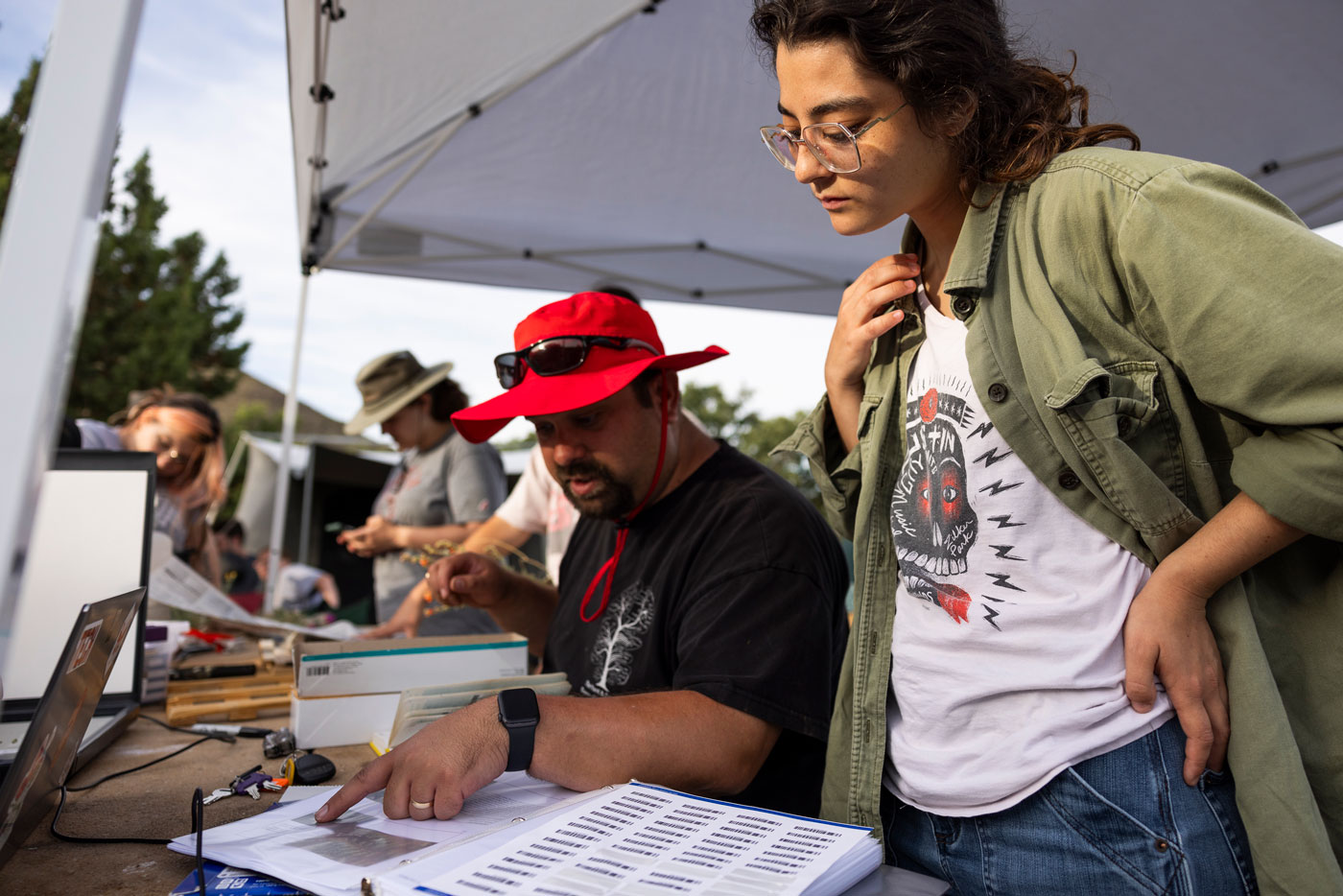
The story behind how and why those samples were found and cataloged is available for
you to read in depth. My colleague Glenys Young wrote an outstanding piece about it
three years ago titled “50-Year-Old Biology Collection Enables New Research Opportunities” and it’s well worth your time.
The article explains the process behind Texas Tech’s herbarium becoming the repository
for samples from Guadalupe Mountains National Park and alludes to future research
opportunities because of those samples.
The article also has one very interesting little tidbit about the cataloging system.
It reads: “Burgess traveled to very remote locations, like the park's McKittrick Canyon, and took copious, detailed notes about the plants he found. He identified the species
he could, but for those he couldn’t, he wrote what he thought it was. And most importantly, he created a cataloging system showing where all the plants
were collected. Those notes enabled the GPS coordinates to be calculated.”
The cataloging system was collected in Burgess’ journal, which sat in the herbarium
for nearly five decades before being discovered.
“Honestly, it was on a high shelf and I never saw it,” Johnson said. “One of my former
students, who was a good bit taller than me, saw it just sitting on a shelf above
the collection.”
Johnson immediately saw the opportunity in front of him and his students.
A treasure trove of half-century-old data. A repository agreement with a national
park, keeping the herbarium at Texas Tech as the landing spot for future data. And
a journal with enough information in it to guide researchers back up mountains and
through canyons to the places where their samples had been collected.
The only thing left to do was figure out how to make the new projects happen.
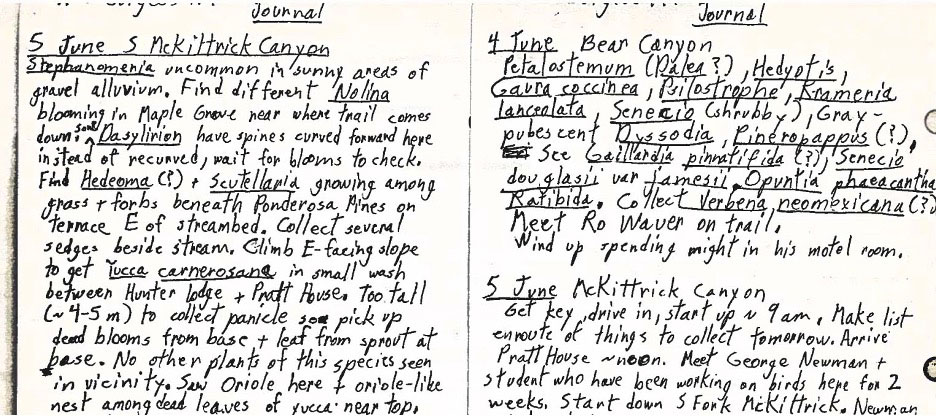
So, what do you do with 50-year-old plant samples?
“In my lab, I had a bunch of data on climate and things from those mountain ranges
in West Texas – not just the Guads,” Dylan Schwilk explained when we met to discuss
his involvement in the Guadalupe Mountains project. “But that was really the only
stuff we had, other than herbarium specimen.
“It’s climate data, which is short-term data that has modeling that goes forward and
backward in time. We had the herbarium data and the modeling data, but the rest is
all new, and Nick spearheaded adding some of the physiological trait data in there.”
Schwilk, like Johnson, is a biology professor at Texas Tech. His research lab studies
plant ecology and evolution with a focus on semi-arid and fire-prone ecosystems. In
simple terms, he does a lot of work to figure out why plants burn and what makes an
ecosystem more vulnerable to fire.
The Nick he’s referring to is Nick Smith, who is another biology faculty member who
is working on the Guadalupe Mountains project. His lab studies the interplay between
plant ecophysiology and the global climate system.
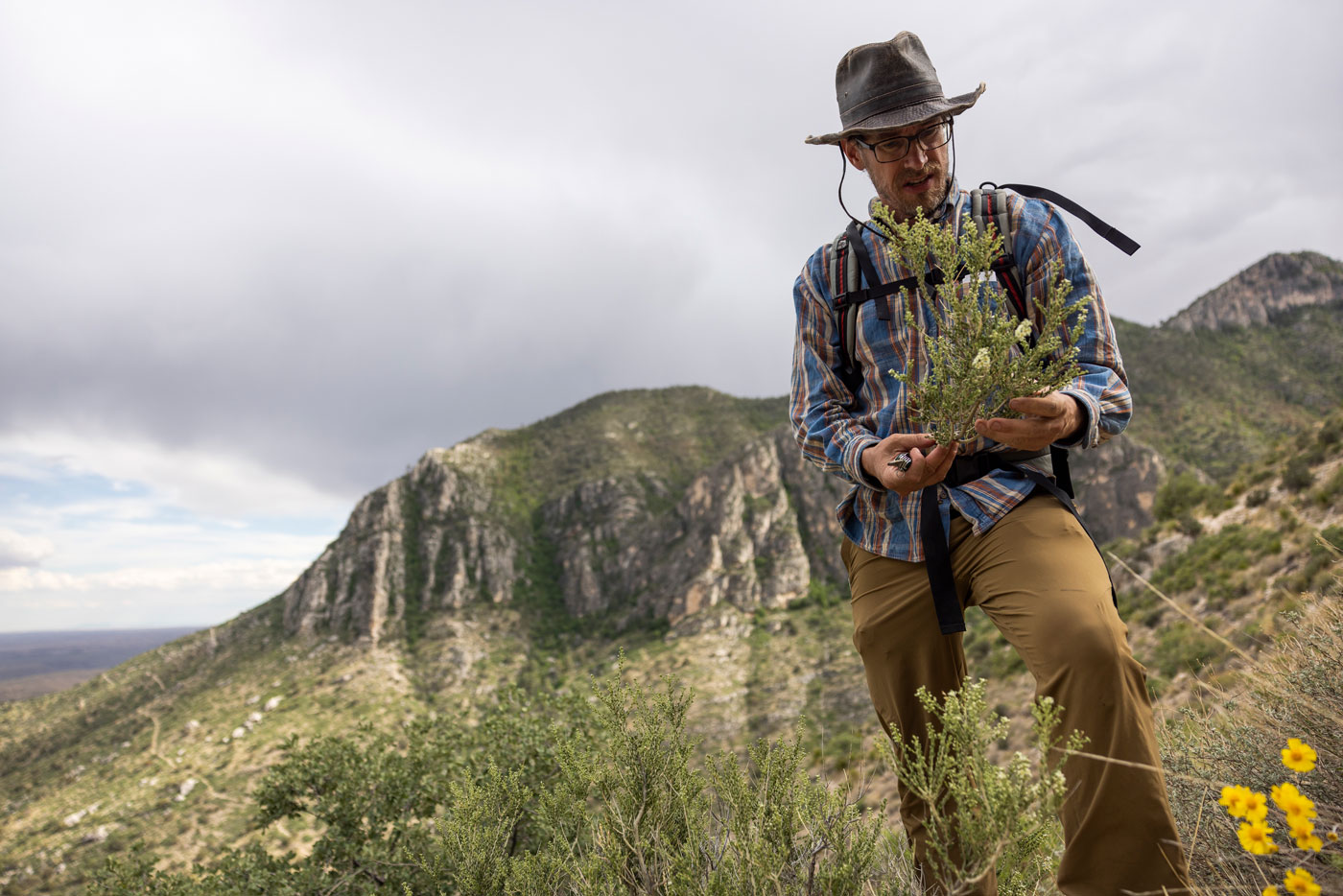
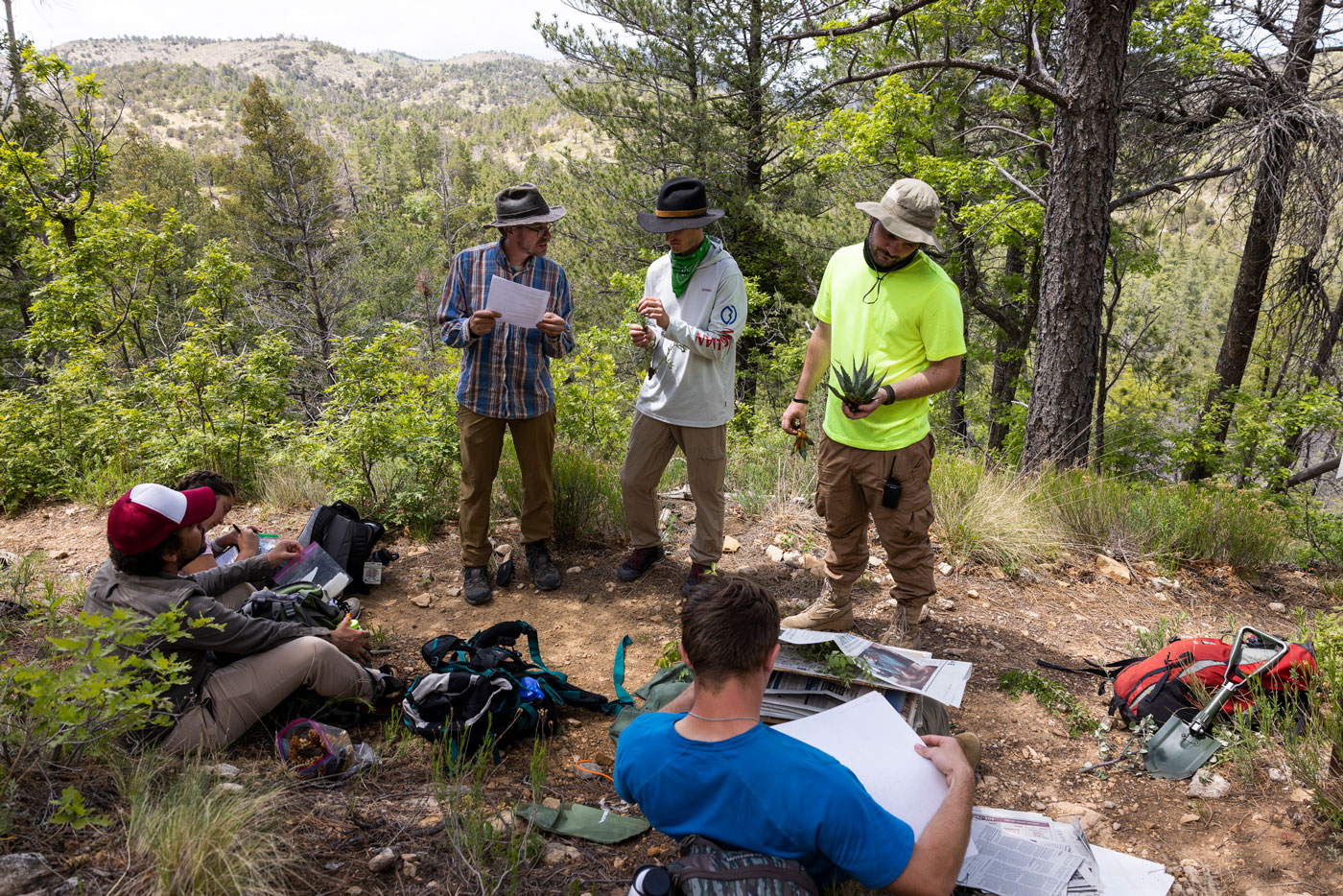
Together the three faculty members and a handful of students set out to show just how impactful having samples from a half-century ago could be in studying plants.
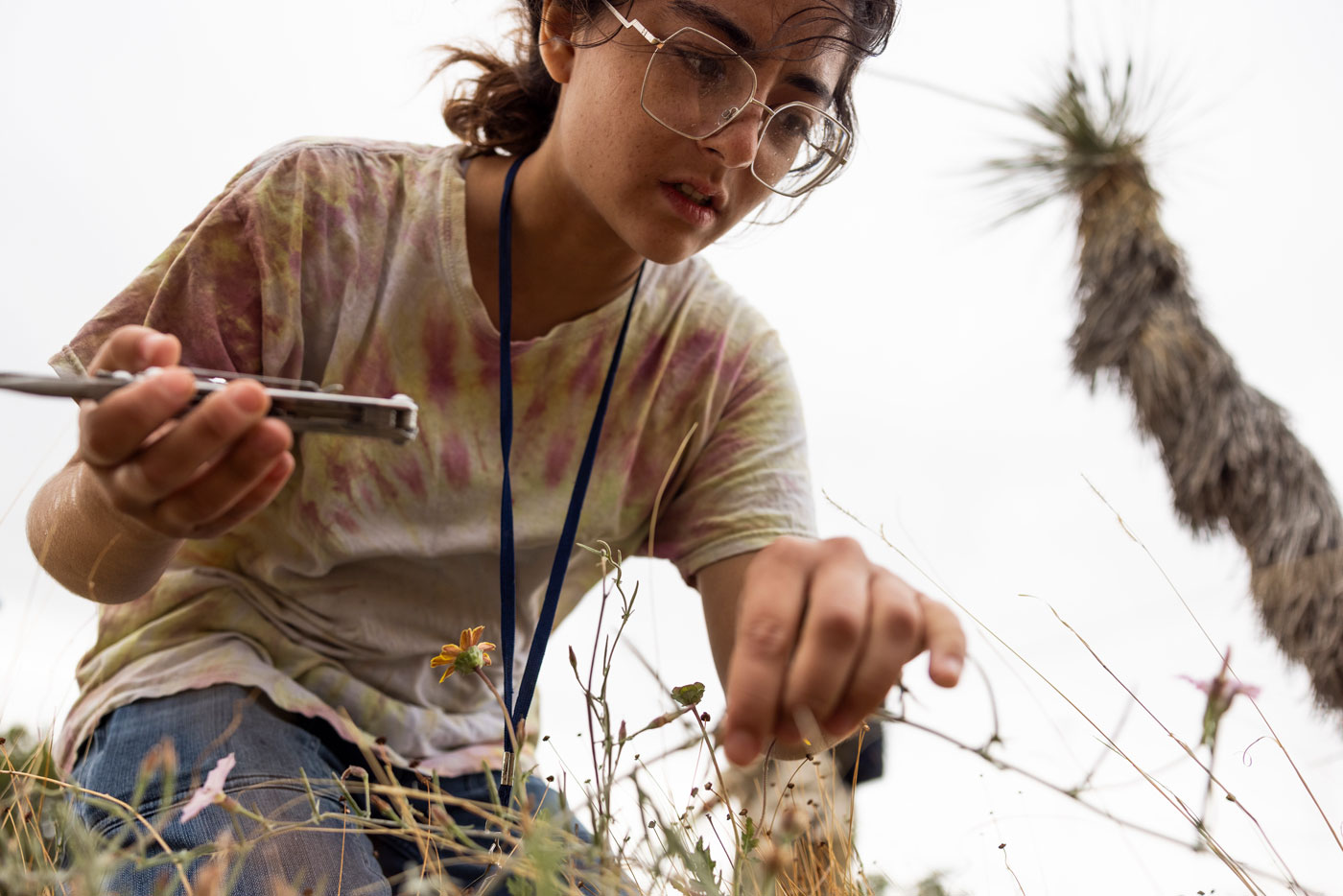
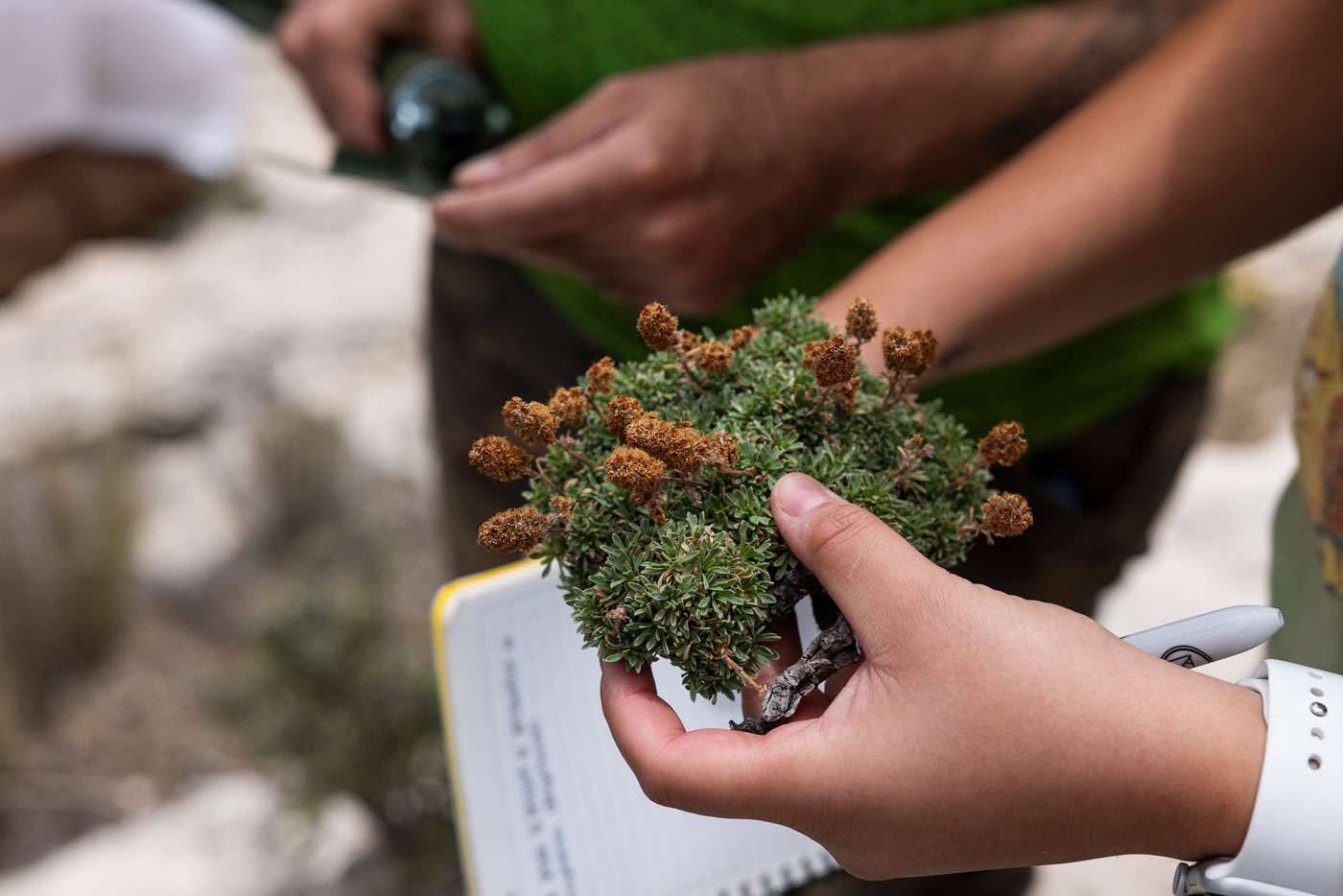
“We have the physical plants from the past,” Schwilk explained. “We don’t have everything
we would love to have about them because they’re now dead in the press. But I mean,
that is pretty rare.”
Having put together a merry band of travelers, Johnson, Schwilk and Smith – joined
by undergraduate and graduate students – got to work following some of what Burgess
and Northington had done in the ‘70s.
Using the journal and the samples at the herbarium as a guide, they ventured back
to the Guadalupe Mountains.
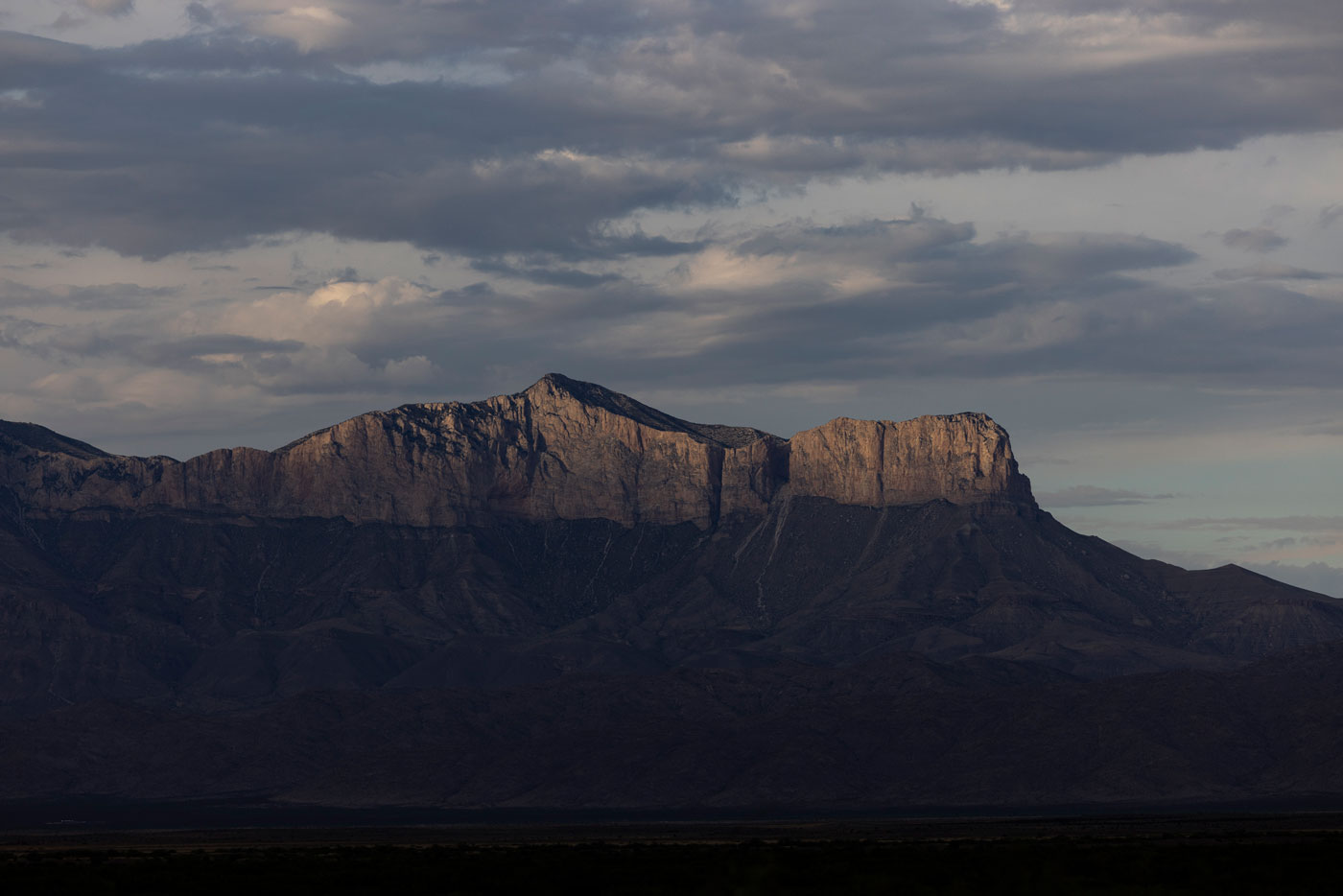
“Those journals were really cool to see,” said Jazlyn Salazar-Lucero, one of the students
who made the latest trip to the park to collect samples. “The one thing I just need
to know still is how did Burgess do it? All of his things were so beautifully pressed.
And after carrying the press up the mountain. I just don't know how he did it.”
Texas Tech photographer Justin Rex made the trek as well and helped document the work
being done. You can find an account of the journey here.
Rex is an experienced outdoorsman, but after days of dragging his camera gear up and
down the trails of the park, he seconded Salazar-Lucero’s assessment.
“The hike is strenuous,” he said. “It really makes you appreciate the level of commitment
a biologist would have to have to do this summer after summer.”
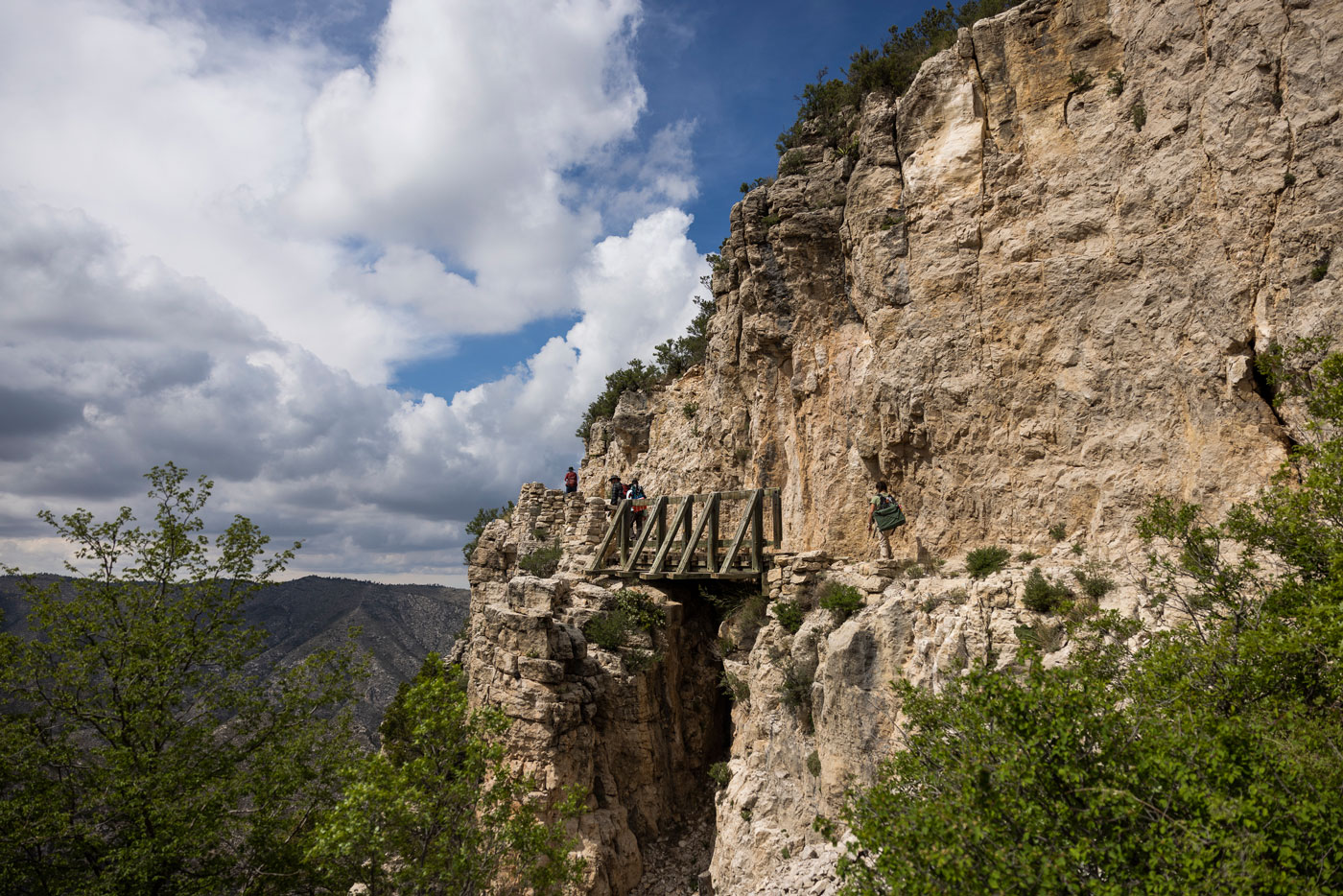
Madison Bullock is one of the biologists showing that level of dedication. She’s the
primary graduate student for Johnson’s team.
“This is basically my entire dissertation,” she said. “I’ve got several different
projects out there that we were trying to get our specimens for.”
Without diving deep into the weeds (pun intended), Bullock is interested in plant
conservation and the park provides an ideal location for study. Among the plants she’s
chosen as her study subjects are some endemic to the mountain range and others that
are more widespread.
Then her and the other students work with what’s available, finding things they can
measure in the new samples that could still be measured in the old samples after decades
in the herbarium.
The work can be grueling while collecting samples, hiking miles up mountains and ridge
trails with enough equipment to collect and press each sample.
It can also be frustrating. In one case, one of the plants Bullock was looking for
proved elusive for an entire season.
“We were really excited this year that I actually found the endemics,” she said. “I
did not find them last year. Somewhere there’s a very happy picture of me holding
a plastic baggie of a tiny flower.”
But it’s fascinating as well.
With new technology in hand – like a portable photosynthesis system that allows researchers
to look at the gas exchange of a plant while it’s still alive – and old techniques
to rely on for collection, the Texas Tech team was able to start collecting data right
on the trail.
Plants were collected and pressed to be brought back to the herbarium where more analysis
could be done.
They did things like DNA sequencing and counting the pores on leaves, minuscule details
that can tell a researcher a lot about how the plant is adapting to an environment.
Because they had 50-year-old samples to compare their new finds to and were able to
collect samples from similar areas, they had a baseline to work with.
Being able to compare those little details, and working on desert plants, is part
of what makes the work being done in the park unique.
“There isn’t a whole lot of global change research happening in deserts,” Bullock
explained. “However, plants that live in deserts are already adapted to those conditions.
So, there’s a possibility that they’ll actually start thriving in those conditions
and will have increased desertification.
“There are a lot of interesting aspects of it that we should probably include in our
current global change models that we don’t have, because most of the models are based
on tropical and temperate ecosystems, and don’t really include deserts and dry environments.”
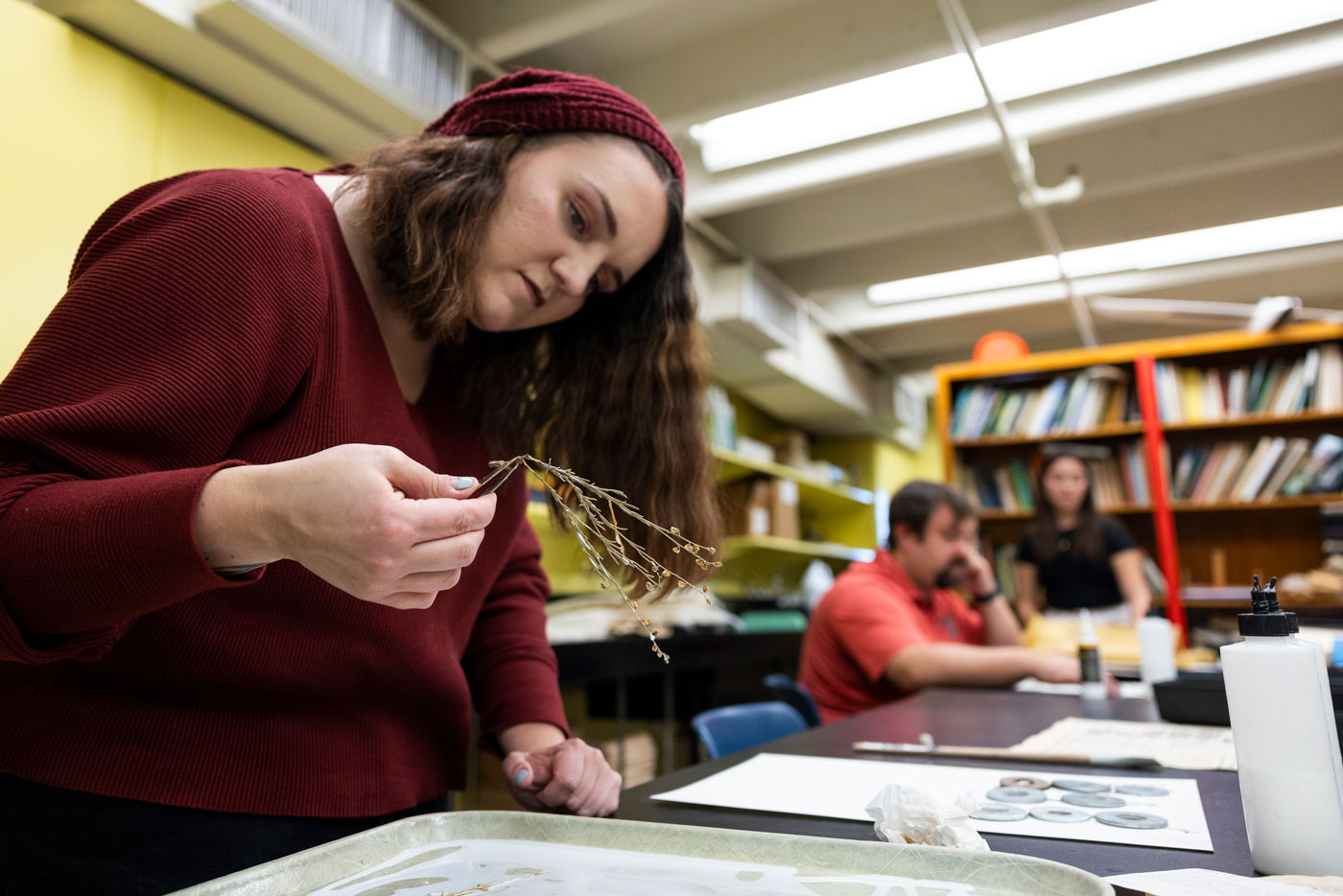
In other words, the work being done in the Guadalupe Mountains is providing a new
baseline of sorts for researchers. By better understanding how plants in a desert
environment have adjusted to changing temperatures and lower rainfall totals over
the last 50 years, they can better predict how plants may react to condition changes
in the future.
“Thinking about climate change and other anthropogenic changes that are happening
there and all around the world – we don’t have a future world to look at,” Smith said.
“This is just one approach to try and figure out what the future world may be like.”
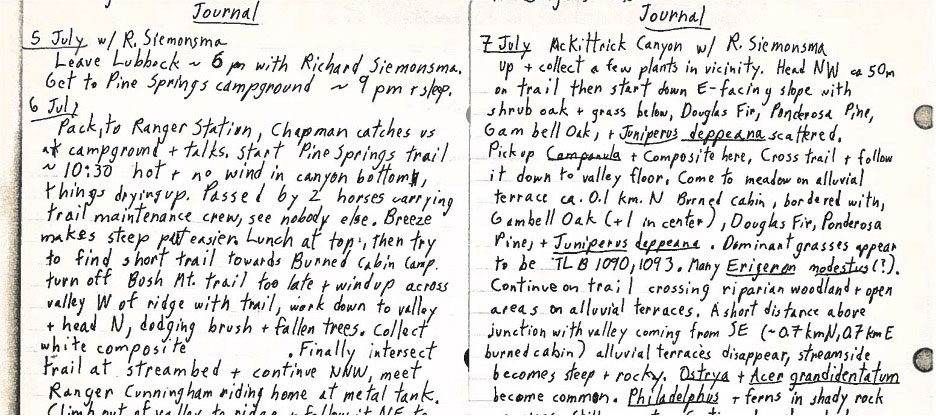
The work is just beginning really.
For 50 years, half the life of Texas Tech, the vast wealth of samples collected from
the Guadalupe Mountains sat largely untouched. It was overlooked or forgotten as it
bounced from home to home on campus.
Or, maybe, the technology didn’t exist to use the samples in a meaningful way.
“A cool thing about this project that’s been sort of enlightening to me is that these
guys went out 50 years ago and gathered and pressed all these plants without knowing
what we were going to do with them,” Smith said. “They probably had ideas about what
those plants would be used for, but a lot of the technology didn't exist 50 years
ago.
“Maybe they had an idea about what the future was going to be like, but that’s kind
of cool. You know, we’ve done two years’ worth of sampling that isn’t as extensive
as what they did. But we’ve got all these samples now that 50 years from now, who
knows what biologists can do with them.”
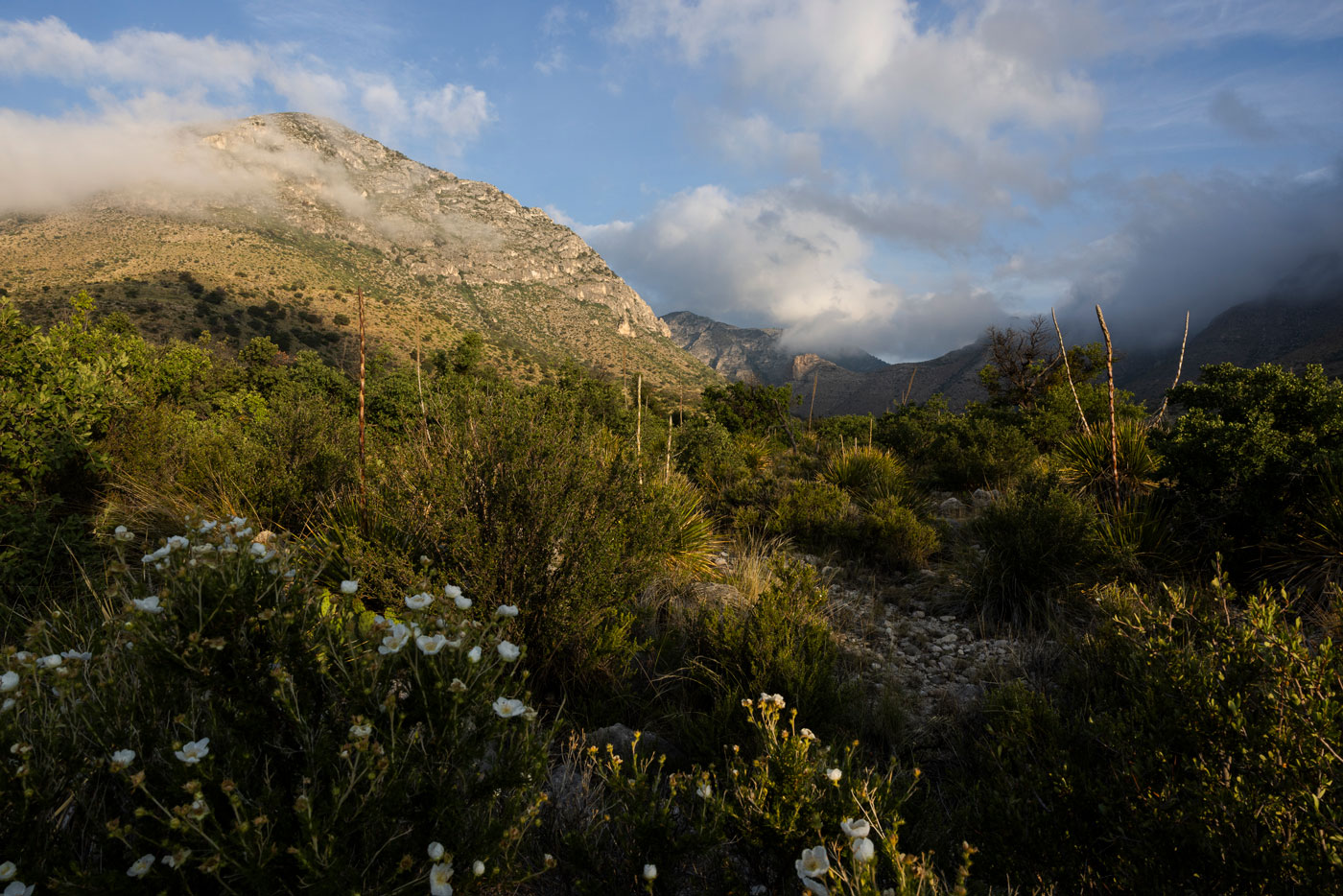
As Schwilk explained, much of the early work done by botanists like Burgess and Northington
was simply to examine what existed in a location. They were finding new plants and
working to identify what the park’s ecosystem had in it.
It was taxonomic work done with painstaking effort to chronicle it accurately, and
the time and effort put in by those early researchers paved the way for the work being
done today.
It’s also the type of work that still has immense value, though it’s often overlooked.
“I’d say in the last 25 years or so that type of work has been less valued,” Schwilk
said. “I think what we’re doing is maybe drawing some attention to the value of that
type of work.”
The hope is that it’s also opening the doors for more research.
“I think there’s a resurgence in natural history as people are realizing the importance
of recording what’s there before we lose it,” Johnson said. “But the other benefit
that you get from having a collection, it means that we can do these other things
with the collections – the DNA extraction, the photosynthesis proxy and fungal diversity
on a plant specimen.
“These are all not projects that anybody would have thought of in the late ‘80s or
‘90s, because the techniques were not there. Now we have the resurgence of some techniques
that are really just opening up the herbarium and its time-machine potential.”
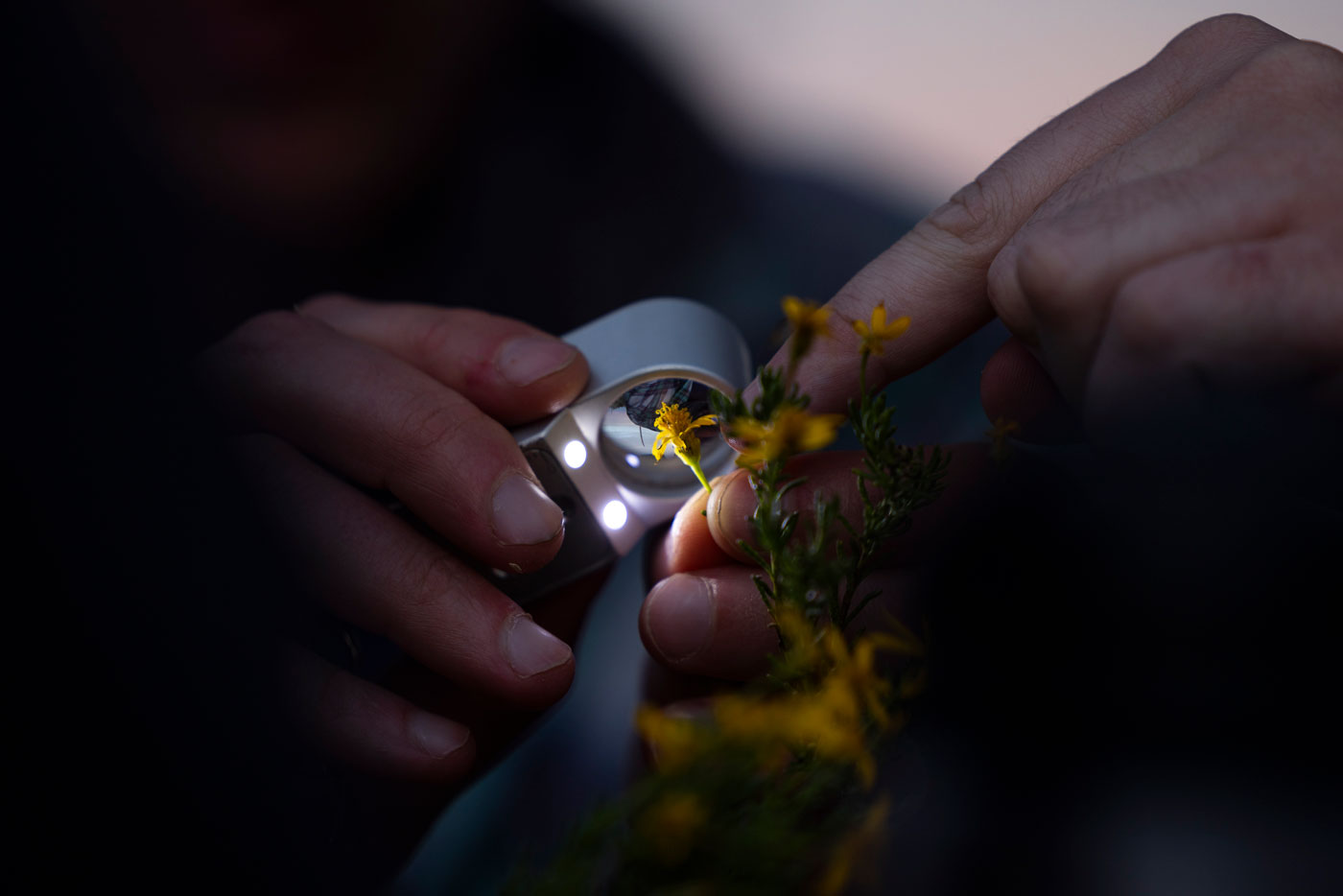
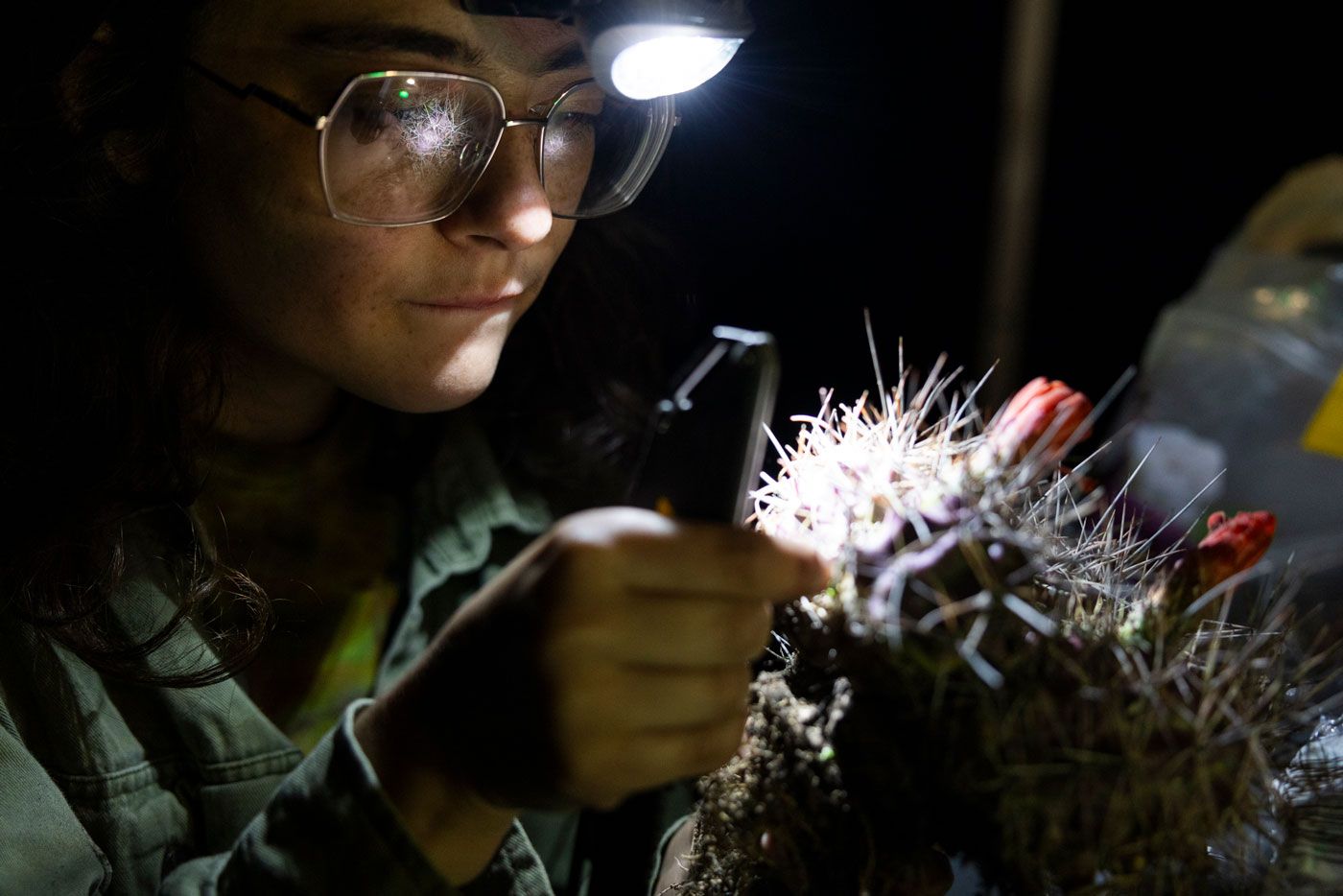
As it stands, the projects in the Guadalupe Mountains are being funded in a somewhat
piecemeal fashion through new-professor startup funds, the Center for Global Communiation’s Livable Futures program and Texas Tech’s TrUE Scholars program, which helps fund students like Salazar-Lucero.
Cost-saving resources, like the Center for Biotechnology and Genomics which allows the group to run DNA tests on campus rather than sending them outside
labs, cutting the cost of each sample nearly in half, helped the project find its
footing as well. But bigger goals still lie ahead.
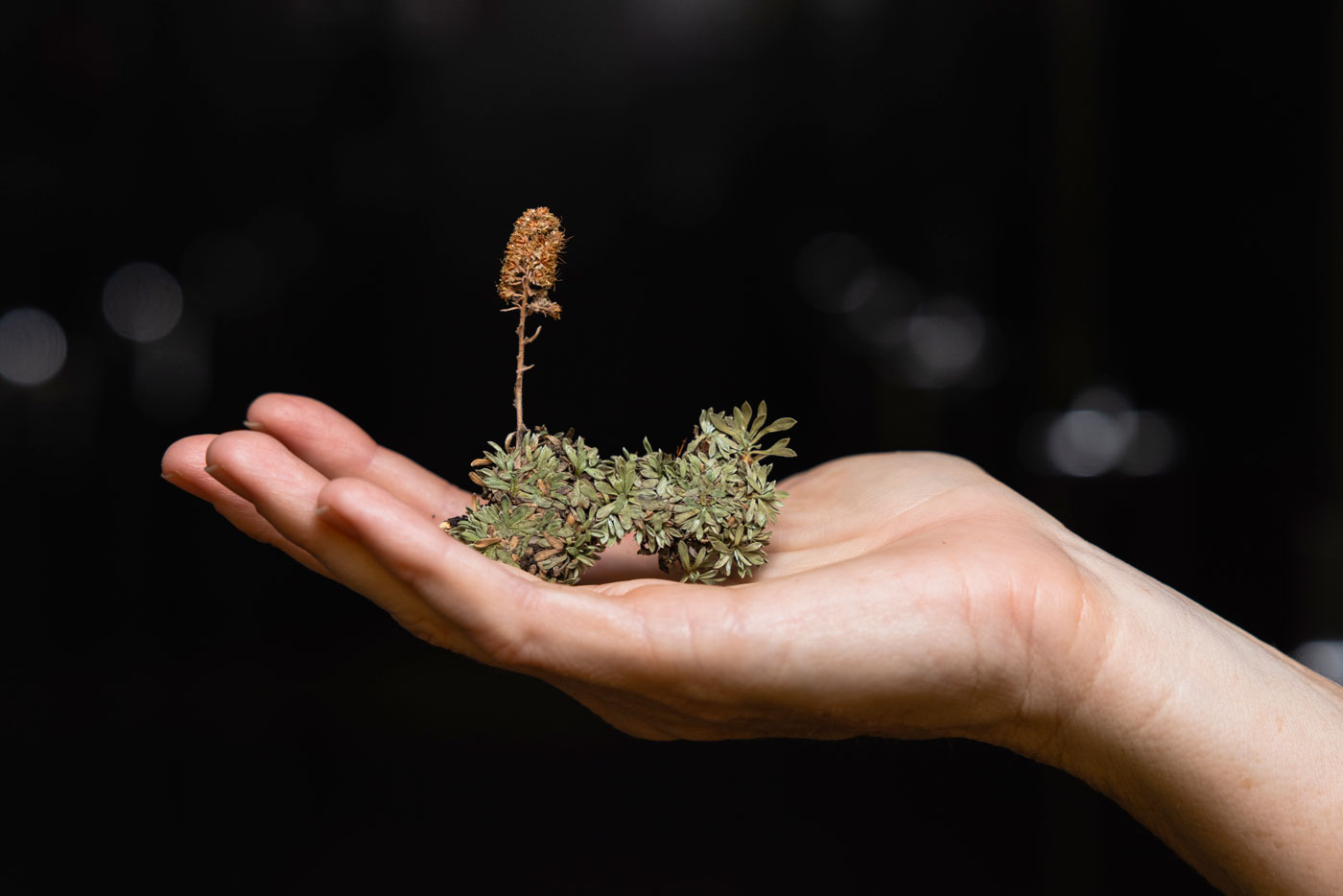
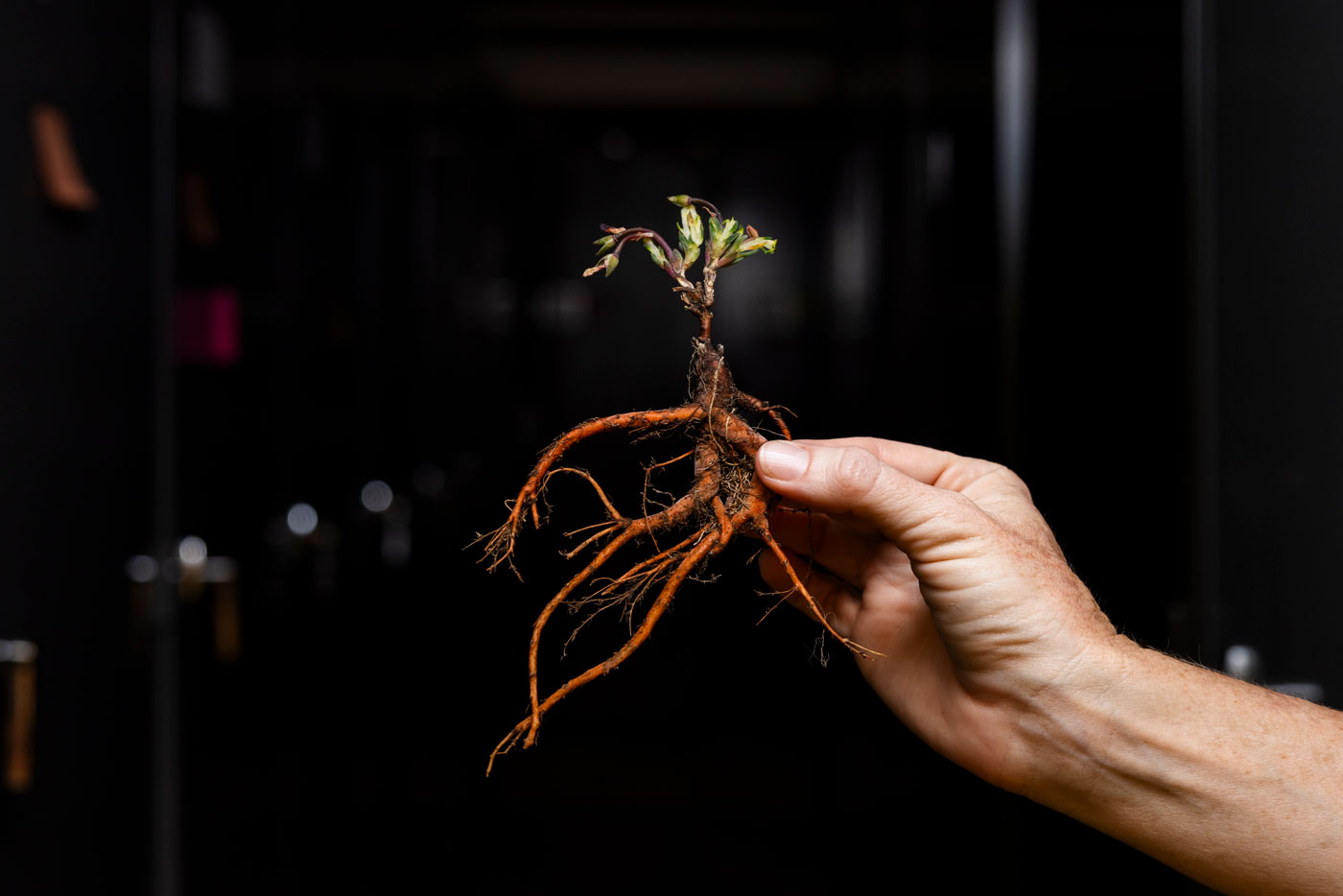
“At the moment we’re just kind of focusing on like, here’s two snapshots of little
blocks of time,” Johnson explained. “We do hope to put all of this together into a
large external federal grant proposal in the near future. This is a lot of preliminary
data that we’re collecting.”
As with all good science, the preliminary data will almost certainly lead to more
questions.
For instance, finding differences in the prevalence of a certain plant species now
versus 50 years ago, or a difference in how much carbon a certain type of plant captured
in the past versus now, will open new lines of query for future researchers.
As Schwilk and Smith pointed out, environmental changes in a place like Guadalupe
Mountains National Park could be attributed to many causes. Were the changes that
are found caused by a shift in the climate, or influenced more by a drastic shift
in how the land was managed after becoming a national park in the 1960s?
Whatever the case, having such a vast collection of samples to work with over a relatively
long period of time presents a unique chance for scientists to pursue new ways of
looking at the world.
It also offers a chance to continue chasing the treasure that Burgess left behind
all those years ago.
That treasure is more than a journal and a bunch of pressed plants.
Those are important, of course, and the work being done today wouldn’t be possible
without them. But the real treasure Burgess and Northington left behind was a naturalist
legacy.
While they likely had no idea of the challenges the world would face a half-century
later, they were curious about nature and wanted to compile and share knowledge with
the world.
They wanted to be good stewards of the earth.
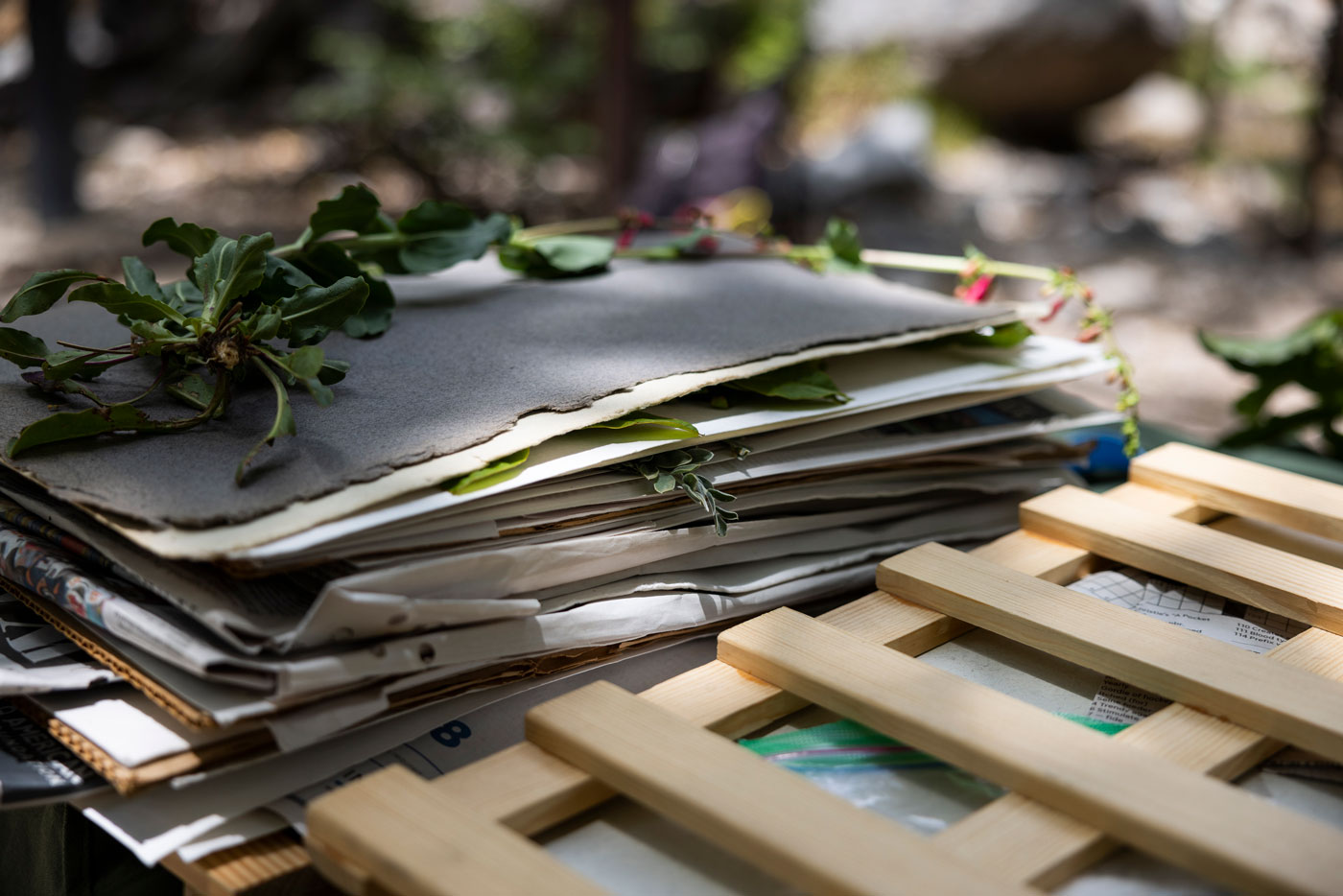
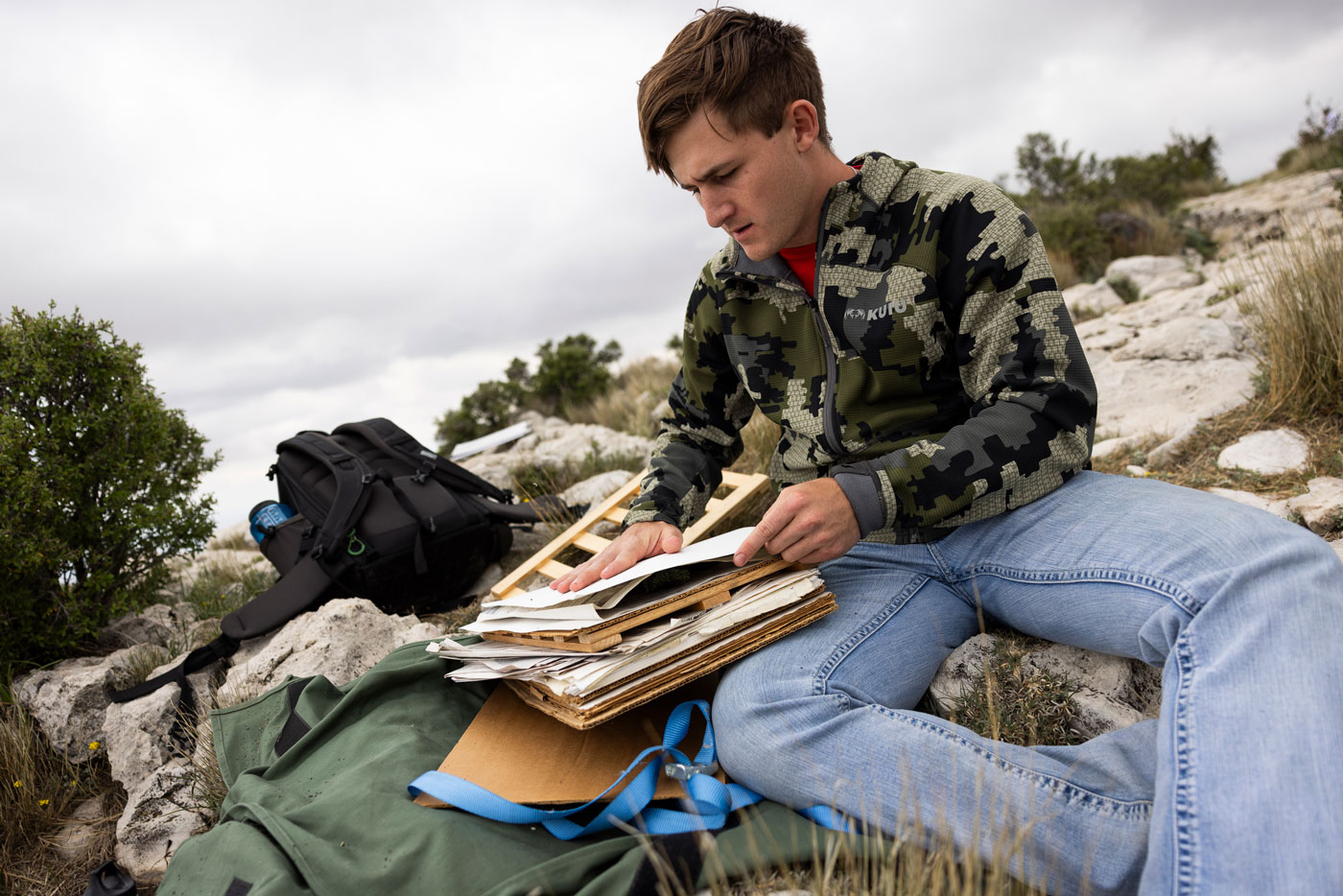
That legacy lives on through people like Johnson, Schwilk, Smith and Bullock.
“I’ve always looked at that Burgess name, and I’m so excited to find that name on
things,” Bullock said. “Now, someone in the future might be excited to see my name
on things. And that’s a really cool thought and also very surreal.
“Having this connection to Burgess through the specimens he collected and his journals,
and understanding what it was like for him 50 years ago is inspiring. He’s no longer
with us, but he was such a great botanist. He has such a legacy that it’s important
for me to continue that. I want to represent the continuation of his research in a
way that I think he would be proud of.”

